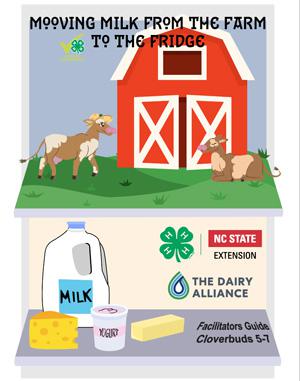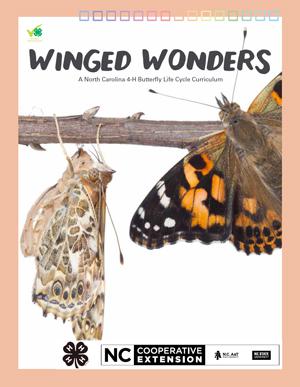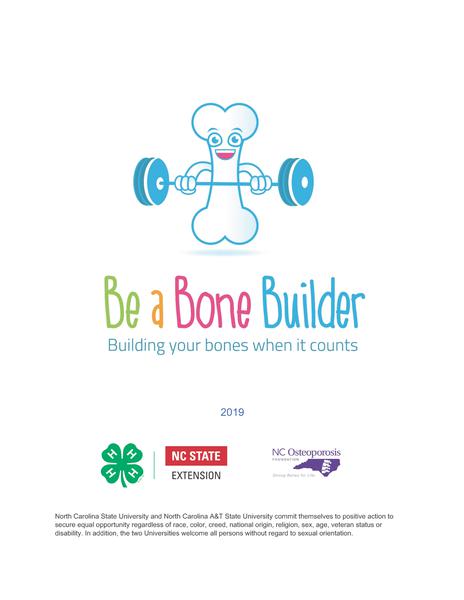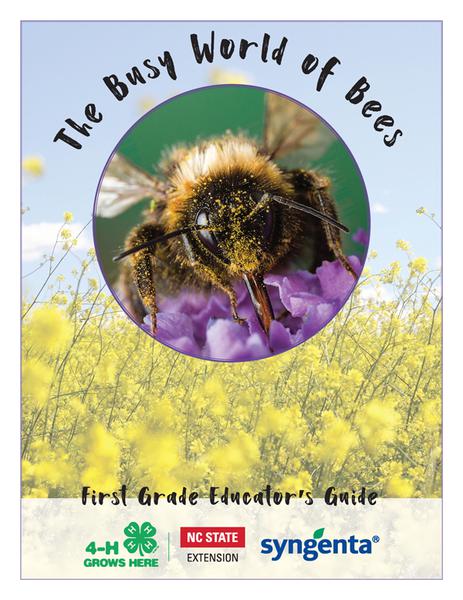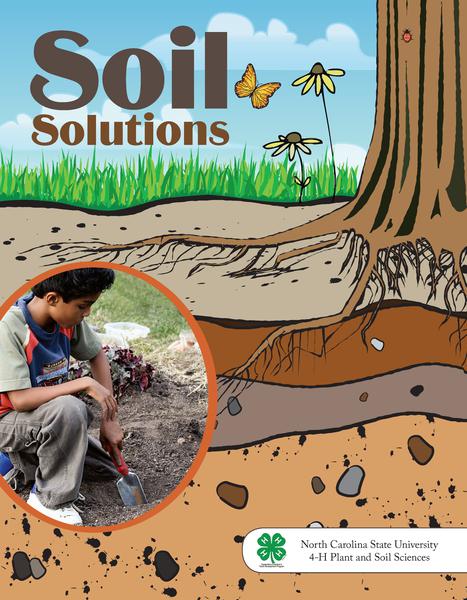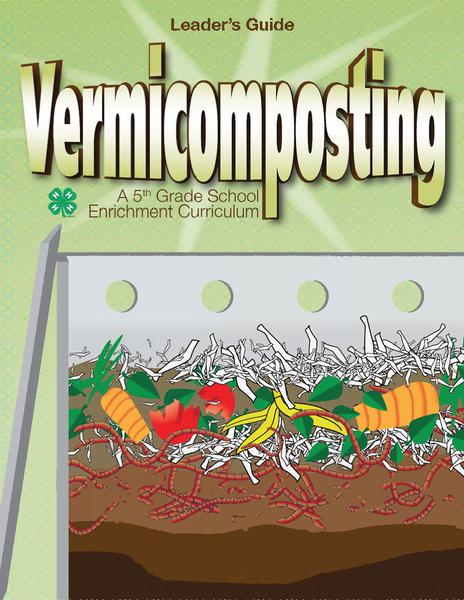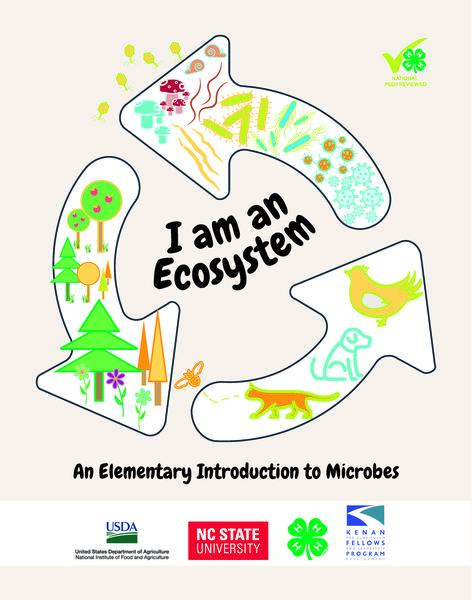Kindergarten - Third Grade
Mooving Milk from the Farm to the Fridge
4-H “Mooving Milk from Farm to Fridge” is a Cloverbud curriculum developed in partnership with the North Carolina State University Department of Animal Science, The Randleigh Dairy Heritage Museum, and The Dairy Alliance. In this unit, youth trace Clover the Cow’s growth from calf to a dairy cow. Along the way, they learn about the dairy industry and how dairy foods can contribute to a healthy diet. The lessons in the unit feature dramatic roleplay, math, science, social studies, and literacy activities as well as
- Coloring pages to go with each lesson
- Take-home activities so Cloverbuds can share their learning with caregivers
- Materials to reach a range of Cloverbud ages and skillsets to accompany each lesson
- A shared-reading book about milk safety
- Numerous suggestions for multimedia learning and extension activities
Winged Wonders
E.O. Wilson, the renowned naturalist, once called butterflies “the flowers of the air.” Beautiful with their brilliant colors, graceful flight, and benign behavior, butterflies enhance our landscapes and gardens. They are also indicators of a healthy environment and a healthy ecosystem. Butterflies play a role in pollination and serve as part of the food chain for other organisms. Butterflies serve as a gateway to understanding the natural world and a visual reminder of the need for conservation of all living things around us.
In this curriculum, youth will observe the wonders of the natural world unfolding in front of them by raising painted lady butterflies from larva through adulthood. Youth will experience the mystery of the butterfly life cycle while engaging in hands-on activities that explore concepts of insect structures and functions, compare insect behaviors and life cycles, and demonstrate the role everyone can play in environmental stewardship.
Kindergarten
Be A Bone Builder
A multi-faceted program focuses on building bones when it counts using age-appropriate materials. The program involves the recruitment and training of volunteers who teach bone health to a younger audience. It bridges age barriers by reaching elementary school-age youth, older youth, and adults with knowledge acquisition occurring across age groups.
Available for purchase through National 4-H.
First Grade
The Busy World of Bees - First Grade Educator's Guide
This curriculum is crafted to engage youth in celebrating bees and their pollinator allies and build an understanding of the benefits that bees and other pollinators provide to humans. In a series of seven lessons, youth will discover that the bee is one of nature’s wonders. Youth will learn that native bees and the European honey bee, help produce delicious and healthy food that humans have been eating for millennia. From the crunch of a fresh apple to the dribble of watermelon juice, nearly one out of every three bites we eat are dependent on bee pollination.
Youth will consider the needs of bees including air, water, light, shelter (nest or hive), and food sources (nectar and pollen) as they explore specific examples of how the environment provides a habitat for honey bees and native pollinators. They will also evaluate the essential structures of bee anatomy and determine how these functions support growth and life cycle development.
Second Grade
Bug Out, 4-H Leader's Guide
Bug Out is a series of insect-based activities that emphasize experiential, hands-on learning. The goal of Bug Out is to increase understanding and appreciation of insects and to reduce the fear of insects. Bug Out also stimulates thinking ability, develops communication skills, and promotes positive social interactions. This will provide a fun, positive learning situation for young people, grades 2–5, when you follow the Bug Out lesson plans. Most of these activities are best done during the summer or fall when insects are the most common and active out-of-doors.
Third Grade
Astronomy - Shoot for the Stars
Welcome to Astronomy: Shoot for the Stars. This publication was designed to meet the needs of our residential 4-H camps in North Carolina and was developed with an emphasis on youth discovering knowledge through experimentation. In particular, the lessons in this publication allow for both daytime and nighttime activities. This publication is a collaboration of the Science House located in the College of Physical and Mathematical Sciences and 4-H located in the College of Agriculture and Life Sciences. Funding for this publication was provided by a grant from the National Science Foundation. The publication was piloted during the summer of 2008 and changes made in accordance with evaluations.
Soil Solutions
Soil Solutions brims with hands-on science lessons that utilize the local school landscape to connect students to the world of soils and plants in an inviting and relevant way. Students will discover the soil beneath their feet, watch as a basil seed germinates before their eyes, and nibble on nutritious and delicious salad greens they have grown themselves. Activities are structured to foster wonder and curiosity and encourage ways to turn student questions into investigations. The teacher’s role becomes one of a collaborator and a partner in inquiry with their students. Aligned to meet North Carolina’s third-grade science standard course of study in plant and soils, the curriculum draws from current research and knowledge in crops, horticulture, and soil sciences.
Fourth Grade
Hive Helpers - Fourth Grade Facilitators Guide
Every spring and summer, youth and adults alike enjoy sweet-smelling flowers and listening to the buzzing sound that comes from the rapidly beating wings of busy bees. Through a series of seven lessons and multiple experiential activities, youth will learn how critical bees are to our agricultural industry and native ecosystems. They will explore different types of bees, their structures, and functions, how they forage for food, pollinate plants, and the ways bees share information. Youth will study native bees and the honey bee and discover the significant role they play in the production of delicious and healthy food that humans have been eating for centuries; such as apples, blueberries, cherries, watermelons, almonds. Through hands-on and engaging exploration of habitat differences and diversity, youth will understand what honey bees, native bees, and other pollinators need in order to thrive. From creating a pollinator garden to building mason bee homes, youth will realize the importance of pollinator stewardship and ways they can support strong and vibrant ecosystems for pollinators. The curriculum concludes with an overview of how people can help bees. Youth will learn how to provide nesting habitats, use best management practices in beekeeping, and building native bee homes. To share and engage others in caring about bees, youth will create an awareness campaign.
Fifth Grade
Vermicomposting Leader's Guide, A 5th Grade School Enrichment Curriculum
The 4-H Vermicomposting program offers fifth-grade students an opportunity to explore a micro-community. This community contains producers, consumers, and decomposers (as all communities do), and students are encouraged to reflect upon their learning as they achieve mastery of the concepts in producing this curriculum we have kept in mind that teachers are busy people. Therefore, each of the six lessons is tied to the Department of Public Instruction Standard Course of Study.
I Am An Ecosystem, An Elementary Introduction to Microbes
In this unit, youth will confront some of the myths and facts surrounding microbes in general and Salmonella in particular. Youth will examine where microbes grow in the environment and under what conditions. They will investigate the roles that microbes play in a healthy ecosystem as well as the roles that microbes play in our own bodies. Youth will also examine the negative effects of microbes as they investigate a disease outbreak. Finally, youth will apply their knowledge by designing technologies to help keep people safe from dangerous, food-borne microbes in our world.
To purchase a paperback version of this curriculum, please visit UNC Press. Your purchase helps ensure that this curriculum will stay current with state and national educational standards as well as provide additional curricula materials locally to North Carolina 4-H agents, youth, and volunteers.
After your purchase, contact Amy Chilcote or Tabitha Barnes to get access to accompanying materials: Powerpoints, video links, facilitator handouts, and link information.
Additional Information
The North Carolina 4-H Curricula are subject to copyright and cannot be used or distributed without North Carolina 4-H’s permission. However, the 4-H Curricula can be used for free when working with your local N.C. Cooperative Extension. If you see a 4-H curriculum that would benefit your classroom, reach out to your local 4-H Agent. Your 4-H agent can work with you to understand how to best use 4-H curriculum, and to get involved locally with additional 4-H education programming.
Publication date: May 1, 2020
N.C. Cooperative Extension prohibits discrimination and harassment regardless of age, color, disability, family and marital status, gender identity, national origin, political beliefs, race, religion, sex (including pregnancy), sexual orientation and veteran status.

